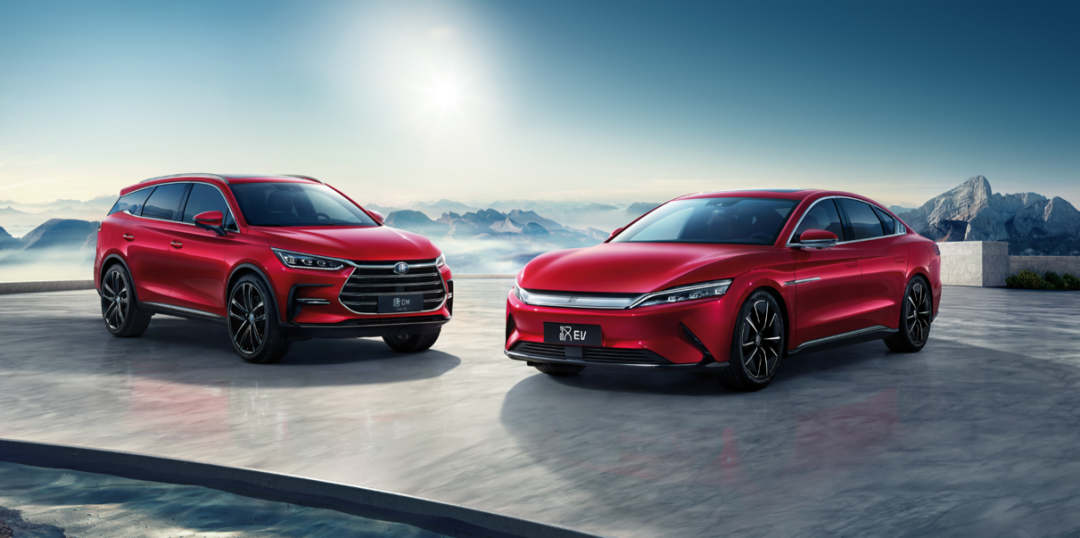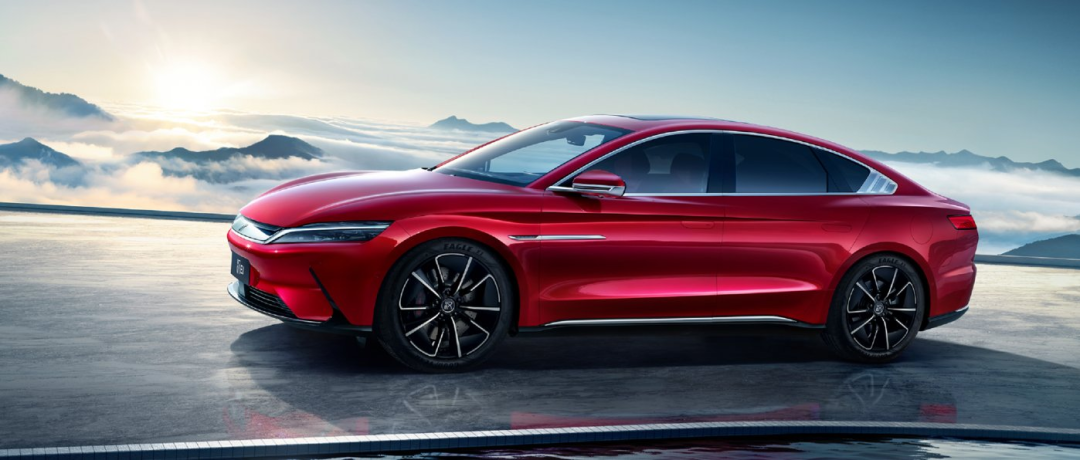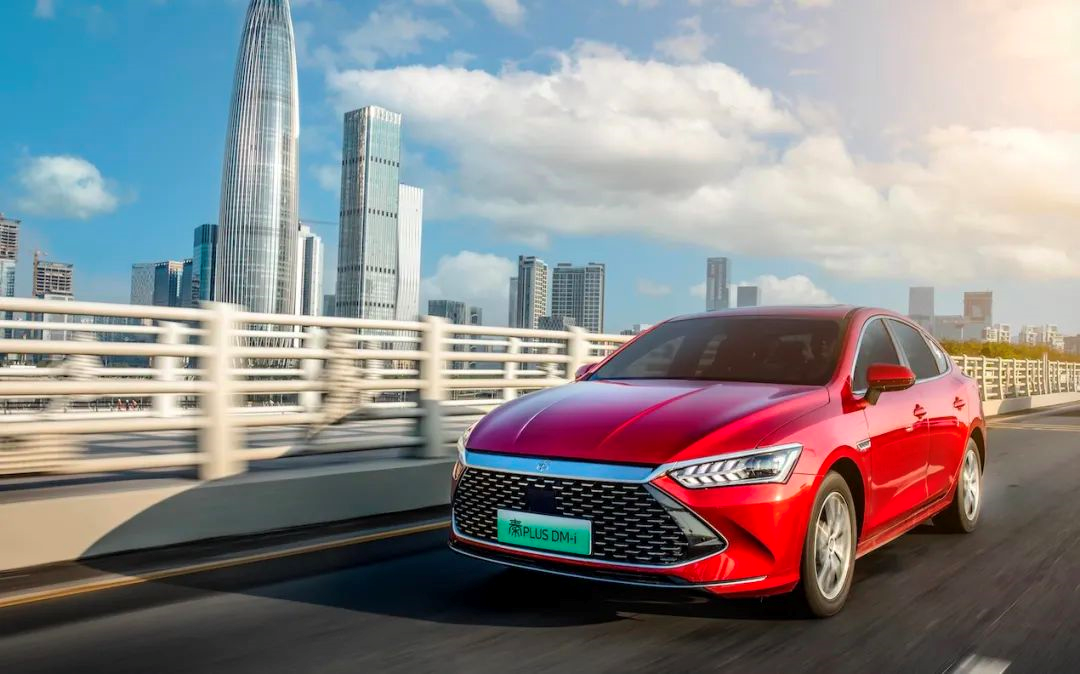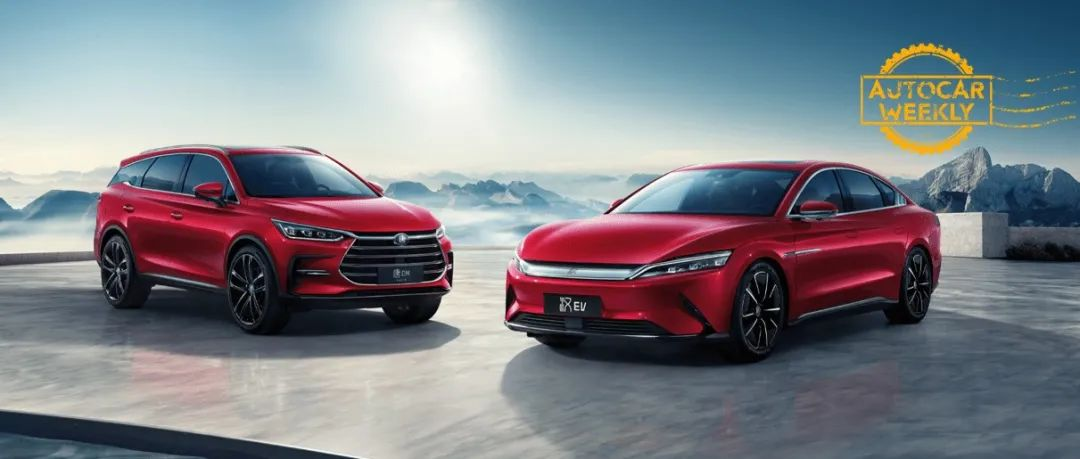*This article was reposted from the autocarweekly public account.
Author: Financial Street Old Li
It would not be an exaggeration to describe BYD, the leader of the new energy vehicle industry, at present.
2021 is a landmark year in the history of the development of new energy vehicles. In the first 11 months of this year, the penetration rate of new energy passenger vehicles exceeded 10%, with the penetration rate in some months even exceeding 20%. Market data shows that China is gradually transitioning from the era of traditional cars to the era of new energy vehicles, with the leading enterprise, BYD, selling more than 500,000 vehicles.

For the last hundred years, every technological evolution in the automotive industry has been accompanied by industry reshaping, from the industry chain structure to enterprise positioning, from sales structure to brand restructuring. Some companies lead the way in new races, while others lose their way. In the last decade, China’s new energy automotive industry has presented a new pattern.
In this round of reshaping the new energy vehicle industry, the most representative Chinese company is BYD. Old Li has talked about BYD’s industrial chain in previous articles. Today, Old Li will discuss with you why BYD is the leader of the next generation of cars, how BYD has completed brand restructuring, and what influence BYD has brought to the Chinese automotive industry.
The Leader of the Next Generation of Cars?
Making travel safer and more comfortable, improving the efficiency and experience of services, and promoting sustainable development of the environment have always been the initial intention of the automotive industry. The driving force behind achieving this intention comes from innovation. Since entering the 21st century, especially in the last decade, under a new wave of technological revolution, the technology and cost of energy, transportation, communication, electronics, and other fields have undergone earth-shaking changes. Many technologies have been applied in the automotive field, driving innovation in the automotive industry. China, as the forefront of the global automobile industry, has keenly grasped the rules of industrial innovation.
In the past decade, in this frontier of China’s change, BYD has been the core force driving electrification. Ten years ago, BYD chose to go All in new energy, firing the first shot of the industrial revolution, followed by domestic new forces such as Nio and XPeng.
What is the ultimate goal of the next generation of cars? This is a question that the industry, enterprises and users have been discussing all along. From the perspective of current technological development, according to the development plan of the new energy vehicle industry, by 2025, the proportion of annual sales of new energy vehicles in China will only be 20%, and even in the optimistic situation of current sales, the penetration rate of new energy vehicles will not exceed 30%. Therefore, the future of automobiles mainly includes two technological routes: one is the universally recognized pure electric vehicle, and the other is the hybrid vehicle.From the perspective of the 10-20 year time frame, in the competition of the next generation automotive industry, whoever can seize the opportunities of hybrid and pure electric vehicles will dominate the market and become a leader in the next generation automotive industry. It has been widely believed that BYD is the most promising domestic new energy automotive company by the capital market, and this is the reason why.

In November, BYD’s sales structure highlighted the trend of the final outcome: BYD’s total passenger car sales reached 97,242 units, a year-on-year increase of up to 84.1%. Among them, new energy vehicle sales soared by 252.7% year-on-year to reach 90,121 units. It’s worth noting that this sets a new record for China’s new energy passenger car monthly sales.
It may contain historical significance to look back at November of this year many years later, but as of now, BYD has become the only automaker who has caught the trend of the final outcome and achieved sales confirmation. Earlier this year, BYD released the Super Hybrid DM-i, which entered the market with advanced technology. At that time, no one could have imagined that BYD could sweep the hybrid market like an autumn wind sweeping leaves. In November, BYD’s DM-i continued to drive sales of its DM models, with a year-on-year increase of 499.8% to reach sales of 43,984 units. This is the best performance of Chinese brands in the hybrid market, without exception.
In the pure electric vehicle field, BYD has also been a long-term leader in the first echelon. In November of this year, BYD’s pure electric vehicle model sold a total of 46,137 units, a year-on-year increase of 153.2%. This sales growth cannot be achieved without the technological support of BYD. In the past three years, BYD has built the “e-platform” and its “blade battery” has a long cycle life and good stability, which has brought good technological support to BYD.

Looking back at history, since its establishment, BYD has always led the automotive market with its technical image. In the era of new energy vehicles, BYD’s hybrid and pure electric technologies have shown inherent advantages, driving sales through technological innovation, and promoting a new image of BYD as a leader in the new energy automotive industry.
Reshaping the industry and elevating the brand
Innovation is the origin of all things. Over the past hundred years, the automotive industry has been progressing, and global automotive companies have also experienced ups and downs. Looking back at every reshaping of the automotive industry throughout history, the process has followed the same logic: from industry innovation to industry transformation, from enterprise transformation to value re-creation, and finally completing the reshaping of the industry landscape.# The New Energy Vehicle Market in 2021
The new energy vehicle market of 2021 has undergone a significant change, and a new pattern has emerged. BYD and Tesla, as the top two leaders in the new energy vehicle industry, have firmly occupied the top two spots in sales volume. Tesla’s Model 3 and Model Y have achieved a monthly sales volume of up to 50,000 vehicles, and BYD has demonstrated a multi-point flowering trend, achieving a monthly sales volume of nearly 100,000 vehicles.
Recently, the capital industry has been discussing what a new energy vehicle brand is. In simple terms, a brand is the impression that a new energy vehicle company’s products and services leave on consumers’ minds. Here, the product concept is broad, including technology, category, sales volume, and model, among many other factors, that jointly shape the brand.
Eight years ago, when Mr. Li just started working, the company’s executives asked which Chinese automobile brand did the best. The answers varied, with some naming Volkswagen and General Motors, and others mentioning Mercedes-Benz and BMW. However, the executive gave BYD as the answer, and the reason was straightforward: when people hear BYD, they immediately think of new energy vehicles.
Eight years later, BYD has become the leader of new energy vehicles, and Mr. Li also has a deeper understanding of the meaning of new energy vehicle industry’s leaders:
In terms of technological innovation, BYD is the company with the most complete technology reserve in China. BYD has gradually developed a certain technological advantage from the core technology of “three-electric,” comprehensively entering the self-supply era in fields such as power batteries, IGBT, and silicon carbide, among others.
In terms of product innovation, BYD has created and perfected a “large-medium-small” and “high-medium-low” product system, achieving full coverage of consumers’ entry-level, consumption upgrade requirements, and high-end markets. This can be seen from the sales in November.
In November, BYD Han, a high-end model, achieved sales exceeding 12,000 units, maintaining a month-on-month increase for seven consecutive months. Cumulative sales exceeded 140,000. BYD Tang and BYD Qin also showed good momentum, with sales of the youth-oriented Yuan Pro reaching 6,521 vehicles, and the new generation model Dolphin achieving sales of 8,809 vehicles. Old Li believes that this is not only BYD’s success but also a breakthrough for the new energy vehicle industry.
In terms of innovation in the model, BYD has also laid out the fields of energy management, big data, and others, actively expanding the full growth pole of the new energy vehicle industry’s future ecology through model and business innovation. It is worth mentioning that from the perspective of the capital market, BYD’s nearly trillion A-shares market value is the real brand power. The capital market likes the saying of “snowball rolling,” and BYD represents a track of capital competition.
 ## BYD, more than just an automobile brand
## BYD, more than just an automobile brand
As we look vertically, the iteration level and speed of new energy vehicle technology promoted by BYD in the past decade far exceed that of conventional fuel vehicles in the past century. Horizontally, no industry has maintained such rapid development and transformation as the automobile industry in the past decade. BYD is at the forefront of the industry, and its premium ability in the capital market can continue to improve.
According to Mr. Li, brand follows the times and faces the future. Carbon neutrality has brought new opportunities for the development of the automobile industry, while digitalization has given the industry wings to take off. As the new energy vehicle industry becomes the driving force of China’s economic growth, it is moving from the traditional industrial age to the digital age. Just like Apple led the smartphone industry ten years ago and won worldwide reputation, the leading companies in the new energy vehicle field will also become the top brands in the industry.
Industry insiders know that BYD’s organizational structure, management model, and business scope have always been different from other OEMs.
If one carefully reads BYD’s financial reports, it will be found that BYD is not only an automobile company but also a semiconductor and battery company, corresponding to its automobile business, mobile phone and contract manufacturing business, secondary battery, and photovoltaic businesses. The revenue of the automobile business accounts for only half of the total revenue. Seeing this business layout, many friends will immediately think of Tesla, and they are right. Tesla and BYD indeed have a lot in common.
Tesla went from the United States to China, which is going global. Now, Chinese new energy automobile companies are also going global. In the past few years, BYD has been promoting overseas business, and its electric buses have been selling well overseas. At the 26th United Nations Climate Change Conference (COP26) earlier, BYD’s zero-emission pure electric bus was designated as the official shuttle bus and main venue exhibition vehicle for global leaders and the public. During the fourth China International Import Expo, BYD was awarded the first domestic SGS carbon-neutral commitment statement certificate, becoming a typical representative of the automobile industry promoting carbon neutrality.
Change with the times and act according to the trend. Over the past few years, BYD has been promoting the development of the new energy automobile industry with technology, quality, and the market:
First, redefine new energy vehicles with new technology. BYD has always been known for its technology, and new energy vehicles are precisely the best carrier for integrating various technologies. BYD’s blade battery and silicon carbide core technologies have not only enhanced BYD’s technology image but also improved the image of new energy vehicles.Secondly, Boosting User Experience through Quality. In the era of new energy vehicles, users are buying not only cars, but also services. In the past few years, BYD has achieved a new height in the field of new energy vehicles with advanced technology. What made Mr. Li pleasantly surprised was that BYD is also making every effort to promote user service construction. BYD has established a user-exclusive APP community for users to share their daily lives. Focusing on female users, BYD has created “Mulanhui”. Focusing on young users, BYD has launched crossover e-sports and campus marketing activities to help the brand diversify and become younger.
Thirdly, Boosting China’s Confidence through the Market. The fundamental logic for the long-term development of China’s new energy vehicle industry is marketization. BYD’s sales volume is a witness to market development. As a representative of Chinese brands, BYD’s larger significance lies in shaping a confident Chinese new energy vehicle brand. This includes not only technological confidence and quality confidence, but also national confidence.
From 5% to 10% is a milestone in the development of China’s new energy vehicle industry. With the acceleration of global new energy vehicle supply and demand resonance, 2022 may become the year of acceleration in the global new energy vehicle market. New energy vehicle enterprises represented by BYD will evolve from Chinese brands to world brands.
This article is a translation by ChatGPT of a Chinese report from 42HOW. If you have any questions about it, please email bd@42how.com.
